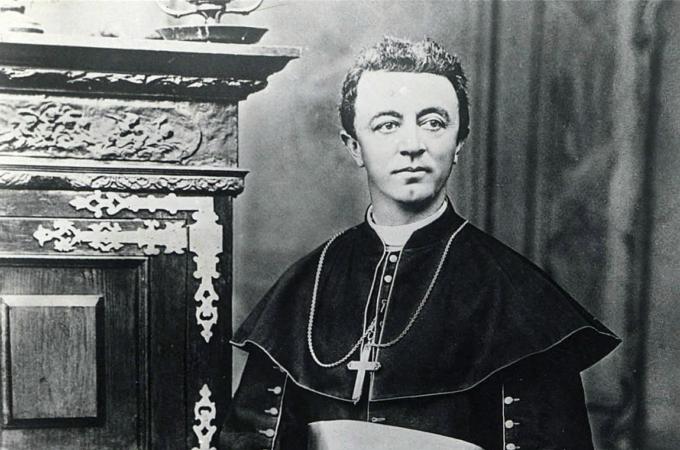An unusual successful family
Marking Black History Month, beginning this week we present a three-part series by Boston College professor James M. O'Toole exploring the life and legacy of America's first African-American bishop, Bishop James Augustine Healy, and his family.
The story of a family -- any family -- is filled with successes and failures, opportunities taken and missed, fulfilled expectations and genuine surprises. No family in American Catholic history embodies this complexity better than Healys. From their origins in Georgia, their story played out across the entire North American continent in space and nearly a century in time. What's more, everything about them and what they accomplished was unlikely. Given the written and unwritten rules of society in their times, nothing they achieved should have been possible.
Their story began with the immigration of Michael Morris Healy, a young man from County Galway, Ireland, in 1815. After landing in New York, he set out for Georgia, still very much the frvontier. Through hard work and luck -- he won several large parcels of land in the lotteries that the state was using to put the territory into productive use -- he built a substantial plantation just outside the town of Macon in what was the heart of cotton country. Like other planters, his success depended on the labor of African American slaves, and by the time he died he had fifty of them, making him one of the largest slave owners in the area.
One of these slaves was a woman named Eliza Clark, whose origins are unknown. (No one at the time thought that a slave's family background was important enough to write down.) But Eliza Clark did not live the life of a slave. Rather, at some time in the 1820s, she became Michael Healy's common law wife.
In forming a family, the two broke powerful taboos. In Georgia, as in most other southern states, it was illegal for blacks and whites to be formally married. No justice of the peace would do it, and any clergyman who dared to preside at such a wedding could be fined and jailed. Though Michael had probably been baptized as a Catholic before leaving Ireland, there was no church in Macon, and the nearest priest was miles away in Charleston, South Carolina. We know that slave owners often exploited their female slaves sexually, fathering children by them while maintaining a "respectable" white family. But neither Michael nor Eliza was ever married to anyone else, instead living together faithfully as a couple for more than two decades. The remoteness of the plantation allowed them to hide their illegal arrangement from the law and the disapproval of neighbors.
Ten children were born to the couple with clockwork regularity and, unusually for the era, nine of them survived to adulthood. First came James (born 1830), Hugh (1832), Patrick (1834), Alexander Sherwood (1836), Martha (1838), and a boy named Michael (1839) after his father. The next baby, Eugene (1842), lived only a few weeks, but he was followed by Amanda Josephine (1845), a girl named Eliza (1846) for her mother, and finally a second Eugene (1849).
All except Hugh and Eugene would live long and successful lives, but at birth their prospects were dim. Throughout the South, children took on the legal status of their mother, not that of their father, a tacit acknowledgment that owners would indeed have illegitimate children with their slaves. The fact that their mother was a slave made all of the Healy children slaves too, even though they were never treated as such. Moreover, their father could not legally grant them their freedom, either while he lived or through his will after he died. The emancipation of slaves in Georgia could be done only by special act of the state legislature, and as a result it was (not surprisingly) never done. Nor could the children inherit their father's property. Even worse, following passage of the Fugitive Slave Act in 1850, which embodied the principle that all African Americans were by definition slaves, anyone who exposed a slave attempting to live as a free person would receive a reward, with the victim sold and the profits shared.
If Michael Healy's children were to escape these dire consequences, he had to find a way to get them out of Georgia, into new lives of freedom in the North. In this, he was lucky again. While traveling by steamship to New York on business, he fell into conversation with a fellow passenger named John Fitzpatrick, who had just been ordained as coadjutor bishop of Boston. The bishop opened a surprising door and determined the family's future.
- JAMES M. O’TOOLE IS THE CLOUGH MILLENNIUM PROFESSOR OF HISTORY AT BOSTON COLLEGE. HE IS THE AUTHOR OF “PASSING FOR WHITE: RACE, RELIGION, AND THE HEALY FAMILY” (UNIVERSITY OF MASSACHUSETTS PRESS, 2002). HE IS CURRENTLY COMPLETING A NEW HISTORY OF BOSTON COLLEGE.



















